News Around NIDDK
NIDDK scientists partner with patients to advance rare disease research
By Rebekah Mikeasky
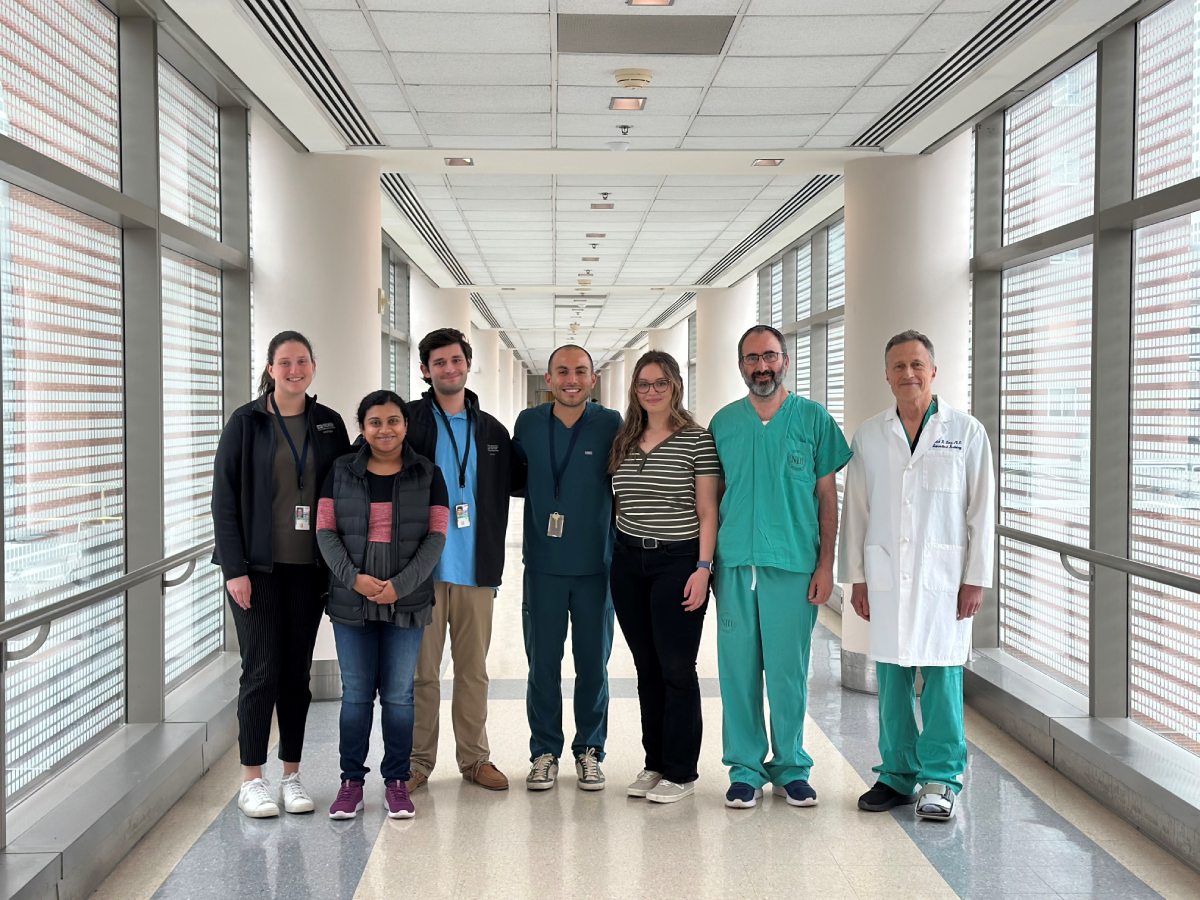 The Heller PSC Research Team from left to right: Jenna Oringher, Moumita Chakraborty, Matt Menkart, Gian Rodriguez Franco, Alaina Magnani, Theo Heller, Elliot Levy, Rownock Afruza (not pictured).
The Heller PSC Research Team from left to right: Jenna Oringher, Moumita Chakraborty, Matt Menkart, Gian Rodriguez Franco, Alaina Magnani, Theo Heller, Elliot Levy, Rownock Afruza (not pictured).
While NIDDK is known for its extensive research on common conditions such as diabetes, the Institute’s efforts extend to all chronic, costly, and consequential diseases under its purview, including rare diseases. Affecting 30 million Americans across more than 10,000 diagnoses, rare diseases are known for being medically complex, difficult to diagnose, and expensive to treat, in cases where treatments exist at all.
As an innovative force in biomedical research, NIDDK and its researchers seek to deepen understanding of rare diseases to improve patient health and overall quality of life. For example, investigators in NIDDK’s Translational Hepatology Section led by Dr. Theo Heller are working together with patients in a new clinical study addressing primary sclerosing cholangitis (PSC), a chronic liver disease that is present in only 5 to 16 of every 100,000 people. The study aims to understand the biological causes of PSC and how the disease affects organ systems beyond the liver.
“PSC is truly a devasting disease, and with this research, we have a real opportunity to make a difference,” said Heller.
The primary characteristic of PSC is inflammation of the bile ducts, which leads to progressive scarring and failure of the liver. The average age of diagnosis for PSC is around 30 to 40 years old, but the condition can be diagnosed at any age, including in childhood.
Currently, the cause of PSC is not known, but a link between the disease and immune dysfunction has been noted, as most patients with PSC also have ulcerative colitis, a type of inflammatory bowel disease. Yet, according to Dr. Gian Rodriguez Franco, a clinical fellow working with Heller, “PSC does not respond to immunomodulation (a therapeutic approach that changes the patient’s immune response via an agent) which is effective for ulcerative colitis, suggesting that additional, distinct mechanisms are likely involved in PSC’s development.”
The study will examine tissue, blood, saliva, urine, and stool samples from volunteering patients, which will allow the researchers to look at links between patient immune systems and possible environmental triggers of the disease. The team also believes it may be possible to identify diagnostic markers for PSC, which could enable early diagnosis and therapy development.
But, conducting an in-depth investigation of PSC requires significant altruism from patients and a relationship of mutual respect and understanding. Each patient has a unique personal relationship with and experience of their diagnosis, which can inform clinical care and study design.
“Patients with PSC or other rare diseases become experts of their own conditions out of necessity,” said Nurse Researcher Alaina Magnani, who has worked in the Translational Hepatology Section since 2022, “As researchers, it’s crucial we listen to patients and their perspectives to truly involve them and allow them to feel seen, heard, and empowered.”
Study participant Marissa Etwaroo appreciated the attentiveness and care Dr. Heller and his team provided. “When I first joined [the study], I didn’t know what to expect. I thought I was just going to be a lab rat, and that was it,” said Etwaroo, who sought out the study after reading a book by a doctor with a rare disease on the importance of clinical studies. “I never had a biopsy done before, but they made me feel comfortable, answered all of my questions, and checked up on me multiple times a day.”
Etwaroo believes these actions were pivotal to making her first time participating in a clinical trial a positive experience. “Healthcare providers play an important role in the patient experience and doing things to make them feel safe and welcome don’t go unnoticed,” she said. “If this was not a great experience, it would have tainted my willingness to help with another trial in the future.”
Adults ages 18 and over who have PSC are eligible to take part in the study. Because of the disease’s chronic and progressive nature, participants are informed they are unlikely to receive any immediate or long-term benefit from their participation. However, this awareness has not stopped patients from signing up.
“Participants take time out of their lives to contribute to a study that will likely not benefit them personally. To me, that’s the definition of selflessness and determination for the future of PSC research,” stated Magnani.
Together, the research team hopes to advance understanding of PSC and bring hope, not just to patients currently affected by the disease, but to future generations as well.
Beyond Dr. Heller’s lab, other NIDDK researchers are currently studying rare diseases. Dr. Richard Proia, Deputy Chief of NIDDK’s Genetics & Biochemistry Branch, and Staff Scientist Dr. Laura Allende are studying neurodegenerative diseases related to a particular type of lipid molecule. For instance, they recently published a study on GM1 gangliosidosis, a genetic condition that causes sugar-containing lipids to accumulate in the brain and destroy brain cells over time. Their work aims to identify the gene(s) influencing the disease’s severity and create a model for therapy development.
Chief of the Section on Translational Diabetes and Metabolic Syndromes, Dr. Rebecca Brown studies rare metabolic diseases, such as generalized lipodystrophy, a disease affecting 1 in 10 million people that prevents the body from storing fat, leading to health complications similar to severe obesity. By studying multiple rare diseases, her lab aims to identify possible targets for treatments in common conditions, such as type 2 diabetes.
Dr. Lynnette K. Nieman, chief of the Section on Translational Endocrinology, researches disorders of cortisol (a hormone that helps the body respond to stress and regulates food metabolism) excess and deficiency, including Cushing’s syndrome. Cushing’s syndrome affects 10 to 15 of every million people and causes weight gain, diabetes, and cardiovascular disease, which may lead to early death. Using the syndrome as a model of obesity, Nieman’s research team seeks to investigate how cortisol causes weight gain.
Ultimately, the study of rare diseases is complex and breakthroughs are infrequent, but through the collaborative efforts of patients and NIDDK researchers, long-standing medical mysteries can be unraveled.
Annual NIDDK Scientific Conference draws more than 200 attendees
NIDDK fellows and scientists from 18 labs and branches gathered to share their research at the 19th Annual NIDDK Scientific Conference. Organized by the Fellows Advisory Board and NIDDK Fellowship Office, the event took place at the NIH Natcher Conference Center from April 11 to April 12. Invited keynote speakers, Dr. Caryn Outten from the University of South Carolina and Dr. Sudarshan Rajagopal from Duke University, shared their research on iron homeostasis and GPCR signaling in inflammation, respectively.
Over the two days, participants gave a total of 12 oral presentations, 10 three-minute talks, and 137 poster presentations, while competing for travel awards. This year’s conference included two new events, a career seminar and scientific debate, providing attendees with additional career development opportunities.
2024 19th Annual NIDDK Scientific Conference award winners:
Elevator Talks
- Ivan Alcantara, Ph.D. Candidate
- Dr. Fehmida Farid Khan
Oral Presentations
- Dr. Shahar Azar
- Melissa Arroyo-Mendoza, Ph.D. Candidate
Poster Presentations
- Dr. Andres Felipe Leon Torres
- Dr. Fu-Sheng Chang
- Dr. Koushik Ponnanna Cheranda Ravi
- Natalie Chin
- Dr. Mariam Sayed
- Dr. Chi-Jui Feng
NIDDK program exposes young minds to the world of science
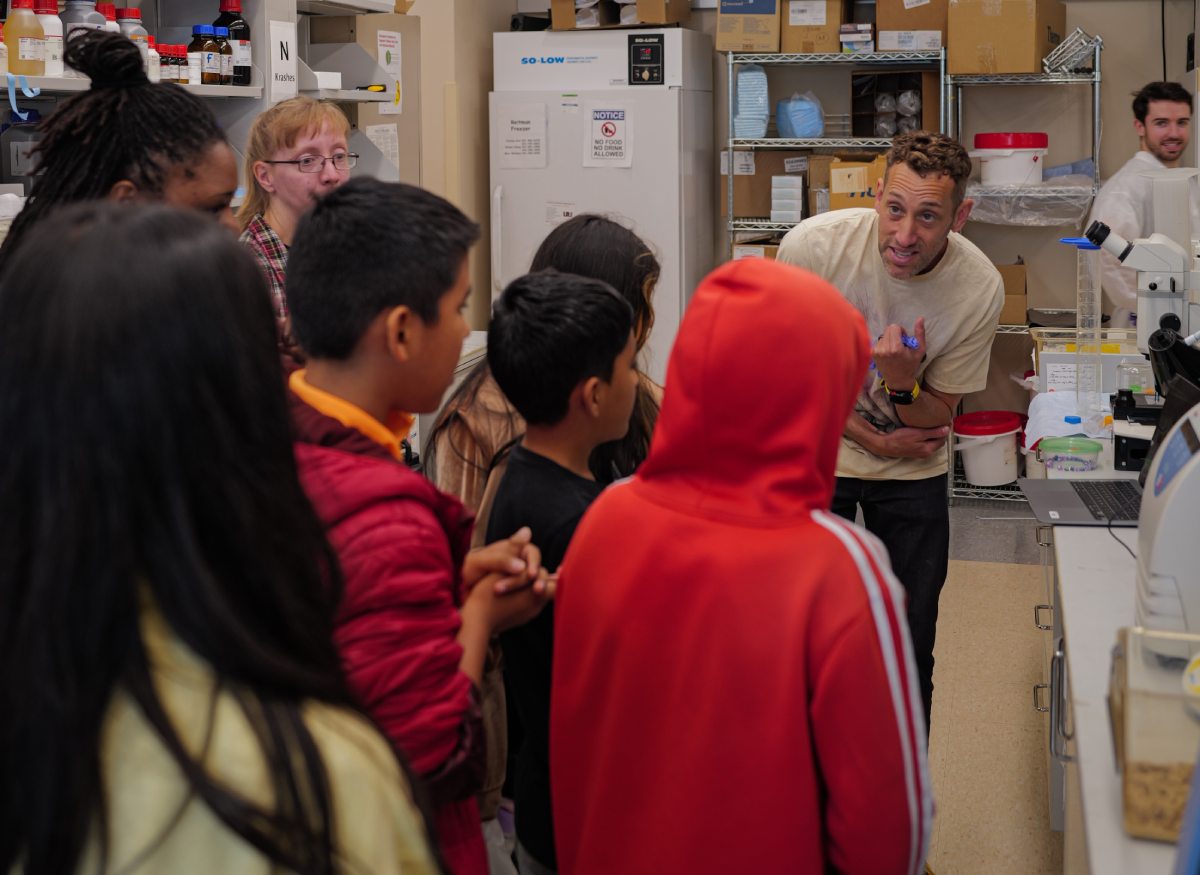 Fifth graders from Sargent Shriver Elementary School see science in action as they tour the lab of NIDDK’s Dr. Michael Krashes.
Fifth graders from Sargent Shriver Elementary School see science in action as they tour the lab of NIDDK’s Dr. Michael Krashes.
The NIDDK Elementary School Tour returned this year, bringing fifth grade students to the NIH campus to experience the excitement of scientific discovery. Following a welcome from NIDDK Director Dr. Griffin P. Rodgers, the students, who were from Sargent Shriver Elementary School in Montgomery County, Maryland, took part in interactive activities that included meeting NIDDK scientists, touring their labs, and learning about their research. The tour was hosted by the NIDDK Division of Intramural Research, which launched this program in 2018 to encourage local elementary school students to explore the field of science and help them envision careers as future scientists and researchers.
NIDDK’s health information now in EHR systems across the country
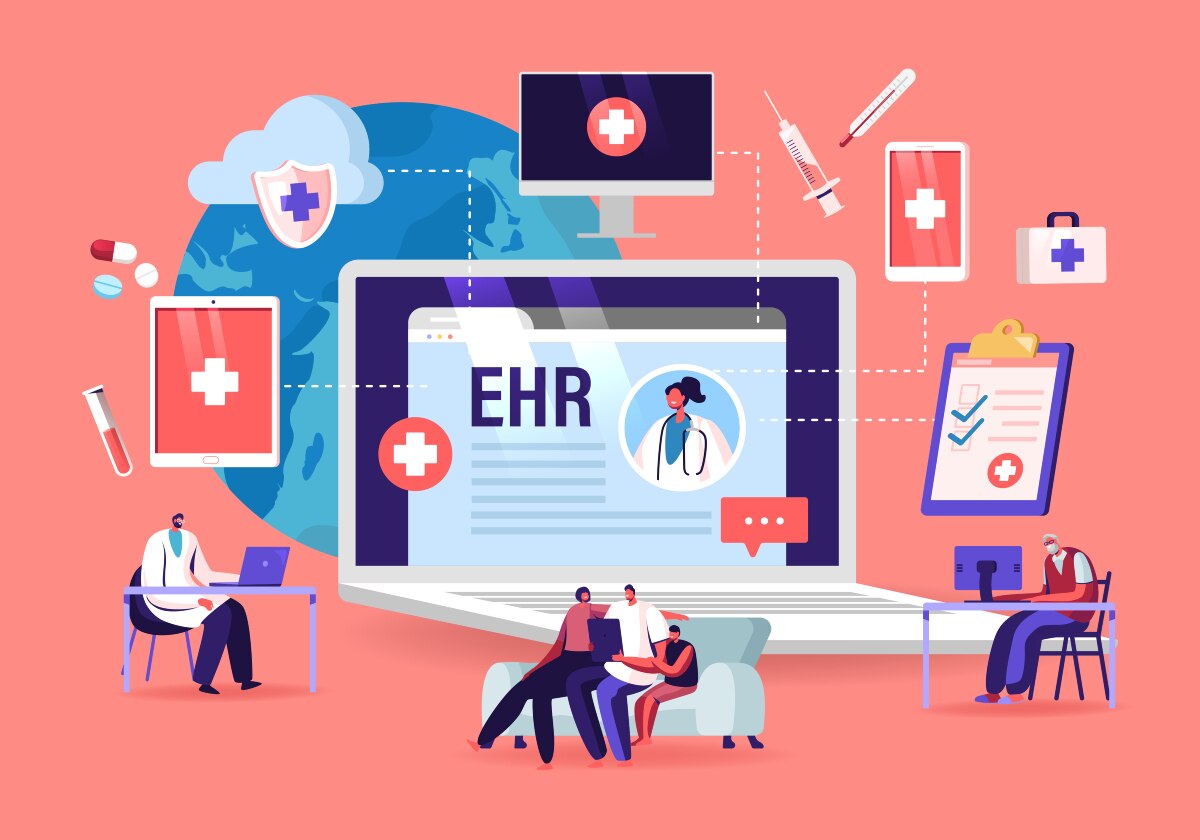
NIDDK has long been committed to helping ensure that as many people as possible have access to trustworthy health information to improve their health. To that end, the Institute launched an innovative pilot program last year to expand the ways health information reaches the public.
“We wanted to make evidence-based health content available in health systems throughout the country,” says Dana Sheets, digital engagement team lead and deputy director of NIDDK’s Office of Communications and Public Liaison (OCPL) and the NIDDK lead on this program. “The program disseminates NIDDK health information via electronic health record (EHR) systems hosted by Epic and OCHIN.”
Epic Systems is a leading EHR provider and OCHIN is one of the largest nonprofit health systems in the country, with over 200 federally qualified health centers. Health care providers and their patients who use these systems can access information on demand from the NIDDK website, which covers more than 150 various health topics. The website’s health information content, developed and maintained by OCPL, is thoroughly vetted and regularly reviewed by experts.
“The pilot aims to share relevant information with patients during and after provider visits, via patient portals, and within mobile apps,” explained Leslie Curtis, OCPL health information team lead. “Our goal is always to meet people where they are.”
In some cases, instead of a provider manually searching for patient health information, the EHR program can dynamically alert providers of NIDDK health information that may be relevant to patients based on their medical record data and diagnostic codes. Patients can then access educational content in plain language to help them better understand their disease or condition.
As of early 2024, links to more than 150 NIDDK health topics on diabetes, kidney disease, weight management, and digestive diseases in English and Spanish (and one in French) are available to all Epic members via Epic’s enterprise software that is used by apps like MyChart Care Companion® and MyChart Bedside®.
A selection of 25 health topics is also available via OCHIN’s implementation of the Epic EHR system as full text resources in visit summaries and patient portals. Each topic contains a brief, optional satisfaction survey which asks about the length and ease of comprehension of the topics and the likelihood that the patient will discuss the content with a health care professional. OCPL will use the survey results and content performance metrics to refine and expand the pilot program to increase the available NIDDK health information via EHR systems.
NIDDK health information is also available to EHRs via MedlinePlus Connect, a service of the NIH National Library of Medicine.
Getting to Know: Dr. Shilpa Hattangadi
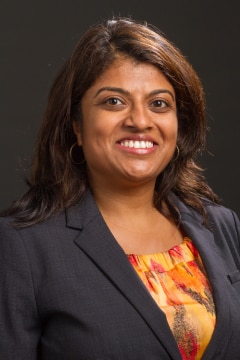
Dr. Shilpa Hattangadi is a pediatric hematologist and program director in NIDDK’s Division of Kidney, Urologic, and Hematologic Diseases. She oversees programs in hematopoiesis, which is the production and function of blood cells, epigenetics, and bone marrow failure. She spoke with Steve Winter about her professional journey and commitment to furthering work supported by NIDDK.
What led you to work at the NIH?
During my time as principal investigator and physician-scientist at an academic center, I thought about ways to broaden my scope of work. Rather than having just a few people in my lab, I wanted to have a bigger impact on the field in general, which is possible as a program director at NIH.
What got you interested in hematology?
In medical school I worked with a pediatric hematologist, and I saw the significant relationships he had with his patients compared to some other specialties. The hematologist got to know his patients over a lifetime because most of them had chronic diseases; even though sometimes he saw them in the ICU, he also saw them month by month, year by year, in the clinic. There was a closeness in those relationships and clinical approaches and research questions that I saw as both intellectually stimulating and fulfilling.
What does an average day look like?
I spend part of my days meeting with outside scientists to discuss their most recent summary statements, grant reviews, or pilot applications. I also spend time with younger investigators. They’re still learning to navigate the NIH grant system and often can use help on different topics. I also facilitate some of the training programs themselves, which entails helping to review, checking who’s eligible, and helping to create the next training program. My role is to make sure trainees and early-career investigators are armed with the right tools for success and empowered to push the field forward.
What advice do you give young researchers?
Expect delayed gratification, because research is not about quick wins. Often experiments or ideas don’t work, or the grant or paper gets rejected.
If your idea was right, that gratification will come when it all works out. And if your idea was wrong, be flexible enough to adjust it, and then find the discovery in it. Even if your original idea was wrong, you can still discover some knowledge, and that knowledge can still be published and can boost the next idea.
The beauty of research is that it never ends. The right kinds of studies uncover more questions. The best studies create immediate questions for the next ten years as well as the foundation for entire future whole fields. Like new branches of a tree, each of the questions can become its own lab.
What are you most enthusiastic about in your program area?
I’m most excited about the next generation taking the field in their own direction and not being held down by ideas from the past. For example, new ideas, along with improved technology, are changing the perspective on how we look at the fundamental parts of blood development. I’m starting to see ideas that were on the outskirts five or 10 years ago now gaining a foothold, such as the idea that different cell types support each other in the bone marrow. We didn’t understand how that worked, and now it’s a whole area itself that’s being studied, including in patients who are getting gene therapy and bone marrow transplant for their blood diseases. People who came up with those ideas as trainees now have their own labs and are taking those ideas and running with them.
Fellow Spotlight: Dr. Blake Wilson
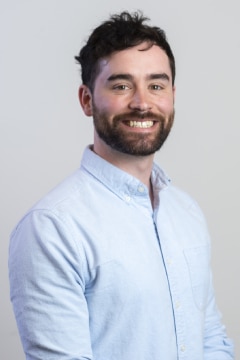
Name: Christopher Blake Wilson, Ph.D.
Hometown: Bethesda, Maryland
Current position: Postdoctoral fellow in Dr. Robert Tycko’s lab, Solid-State Nuclear Magnetic Resonance and Biomolecular Physics Section in the Laboratory of Chemical Physics, NIDDK
What inspired you to pursue a research career?
My parents were members of the foreign service, and their careers took our family all over the world. I grew up moving every few years, with the Washington, D.C. area serving as our home base. At a young age, I saw how access to basic services like clean water, reliable electricity, and healthcare was massively unequal across the world. I have been interested in science for as long as I can remember, and especially in why the natural world works the way it does. At the same time, I came to see science as a powerful tool for improving people’s lives across the globe, through access to better and more affordable technologies, more accessible healthcare, and education.
I was exposed to scientific research as an undergraduate at the Massachusetts Institute of Technology. I spent my summers, and later my off time during the semesters, working in a physical chemistry lab that used nuclear magnetic resonance (NMR) to study proteins and other biomolecular systems at a fundamental, physical level. I went on to get my Ph.D. in physics at the University of California, Santa Barbara, where I worked with physicists, chemists, and biologists to develop and apply magnetic resonance techniques to study protein structure-function relationships. After I got my Ph.D., I came back the Washington, D.C. area to join the NIH, where I work in Dr. Tycko’s research group in the Laboratory of Chemical Physics in NIDDK. Here, I use NMR and other spectroscopy techniques to study how proteins fold and rearrange themselves to adopt their structures, and how diseases can arise when that structure is disrupted by misfolding or by mutations.
What public health problem do you ultimately hope to solve with your research?
Magnetic resonance is a powerful tool that can give atom-by-atom information about the structure and motion of the molecules that form the building blocks of life. Biophysics combines the best insights from physics, chemistry, biochemistry, and engineering to study the molecular mechanisms and discover the basic concepts and patterns that govern life as we know it. As our understanding of the fundamentals improves, we can build better tools and develop the know-how to apply them to problems in human health, from more advanced, accurate diagnostics to new therapeutics.
My research is aimed at developing magnetic resonance techniques for probing the structure and dynamics of molecular mechanisms central to human health and disease. One of my goals is to better understand the causes and the pathology of Alzheimer’s disease, which is associated with the unnatural aggregation of proteins in the brain. By understanding the early stages of aggregation at a molecular level, and by studying the structures of the aggregates as they form, we can hope to inform the development of therapeutics that either prevent aggregation or disrupt aggregates that have already formed. This area of research has been active for decades, and much work remains to be done, but I am optimistic that we can make progress towards treating a disease that affects an increasing number of people every year.

